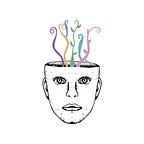Coping Strategies of the Musical Kind
The iso-moodic principle & the mood wheel
Iso-moodic principle
According to the principles of music therapy you can change your mood, as well as calm your body, by listening to a certain number of songs in a certain order or sequence, so as to transport you, step by step, into whichever mood you want to go to.
Iso-moodic principle is “a technique by which music is matched with the mood, then gradually altered to affect the desired mood state. This technique can also be used to affect physiological responses such as heart rate and blood pressure.” William B. Davis, Kate E. Gfeller, Michael Thaut, authors of An Introduction to Music Therapy.
To some people this idea may seem somewhat counter-intuitive. They may ask, “‘If I’m in a bad mood and I want cheering up, why would I want to play a song that is miserable? Why not play something that is happy?” To which the answer would be: playing a happy song when you are miserable will not have any meaningful effect. Only by matching your mood do you then get to alter it, step by step.
So, for example, if you wanted to move from angry to happy, you may need to find music (or a sounds) that takes you along the following pathway
Angry - Serious - Majestic - Passionate - Happy
or
Angry - Sentimental - Serene - Playful - Happy
In order to use this concept as a coping strategy, you will need to set up a whole host of playlists or categories that are unique to you and your moods. This may require a fair amount of trial and error. You can either start the matching process by (i) by by finding out which music/sounds resonate with your current mood at any given time or (ii) by playing lots of different types of music/sounds and finding out what mood they put you in.
The list below is incomplete. You may wish to add your own mood words at the bottom, along with the matching sound/music. Put down as many tunes or noises as you want.
My mood//My matching music/sounds playlist
Happy =
Playful =
Serene =
Dreamy =
Gloomy =
Serious =
Majestic =
Passionate =
The mood wheel
As a music psychologist, Kate Hevner devoted much of her professional career to exploring the therapeutic benefits of music. She created the mood wheel as an extension to the iso-moodic principle.
The mood wheel provides the user with 8 clusters of words/adjectives that are closely related to one another. Each of these clusters has two neighbouring groups of words, which have connections to each other. As a whole, these collections form a circle or a cycle, from 1 to 8. Each cluster will have a range of moods that are diagonally opposite and unalike different from each other.
How to use the mood wheel (see the diagrams below)
a. Using the descriptive words in each cluster, amass a number of songs and/or sounds that fits into each of your mood wheel’s 8 segments. (These songs/playlists/soundtracks will ideally be available to you in your home as well as when you are out and about).
b. Whenever you want to change your mood, you will need to know which number you are currently in and which number you want to get to. For example, 2 to 7 or 3 to 4 or 5 to 1. You will also have the choice of going around the mood wheel clockwise or anti-clockwise.
c. Play a song (or multiple songs) from the mood cluster you are in. Then, play a song or songs from the neighbouring cluster and so on until you get to the music that matches the mood you want.
d. You have now (hopefully) arrived at your chosen mood!
So, for example, I am currently in a playful mood, which puts me into cluster 5, yet I want to be serious (1). I am going to play songs in an anti-clockwise fashion from (5) (6) (7) (8) before arriving at (1).
If you are interested in some of the ideas this article has raised, you may wish to visit www.selfdetective.net
This is an extract from the book Self Detective: Coping Strategies which is available at Amazon
